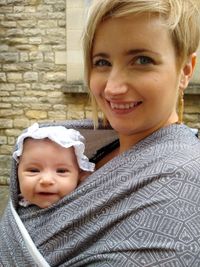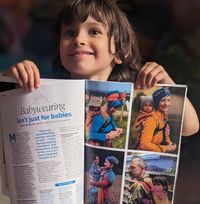Baby wearing isn't just for babies
Why we still wear our 5 year old in the carrier

Babywearing to soothe trauma
Maggie had a very difficult start in life. The healthy physiological home birth we had carefully prepeared for didn't go as we hoped, and I couldn't hold her until her 3rd day, or breastfeed her for five, after she aspirated meconium just before being born with the help of forceps.
After the trauma of our separation in NICU, once we brought her home on her 11th day, I followed my instincts to keep her close at all times to give her body and her spirit the safety and co-regulation that she needed to recover, and the connection we both needed to heal.

We are a carrying species
Learning about the benefits of attachment parenting and having an understanding that our infants expect - on a primal level - to be held (all the time!) strengthened our desire to responsively breastfeed, bedshare and babywear. I knew that was the best thing I could do to help us heal - as well as making mothering so much easier!
As Dr Rosie Knowles, author of 'Why baby wearing matters' explains "Carrying your baby is essential to their normal physical, psychological and neurological development. Human bodies are adapted to be a carrying species, it is part of our evolutionary history."

Giving our toddler a chance to 'be the baby' again
Maggie has taken Rosalie's arrival hard - and I keenly empathise with the insecurity and instability she feels in the world and our family after such a big change.
Our relationship has changed since her sister arrived, and she now resists being close to me or comforted by me, as (in her own words) "when you hug me it makes me feel more", but one thing she never refuses is a 'cuddle carry'.
When I can see and sense her physical overwhelm, agitation in her spirit, disregulation in her nervous system, and emotional disconnection between us - when she is being provocative, lashing out at her sister, trying to suppress her feelings - I know she will benefit from coming up in the carrier.
When she is on my back, I feel her body and her energy settle in a way she rarely does otherwise.
When carrying a heavier child it is important to ensure a good fit. Check for things such as whether your carrier is:
- well-tightened
- waistband level not tilting down when the child is in
- shoulder straps fitting well and not too loose
- fabric going from child’s knee to knee
Seek support from a trained consultant or sling library if you’re finding carrying isn’t comfortable as often small tweaks make a huge difference.







